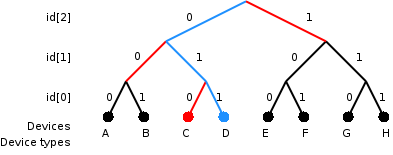|
RSA Blocker Tag
An RSA blocker tag (or RSA tag) is a RFID tag that responds positively to all unauthorized requests, thus blocking some scanners from reading any RFID tags placed nearby. The tags are designed to protect privacy, and are supposedly unable to be used for theft, denials of service, and other malicious uses. Other mechanisms designed to protect privacy for RFID item tagging for retail use are the EPCglobal kill command and the Clipped Tag proposed by IBM. External links RSA Labs press release See also * Contactless smart card A contactless smart card is a contactless credential whose dimensions are credit-card size. Its embedded integrated circuits can store (and sometimes process) data and communicate with a terminal via NFC. Commonplace uses include transit tickets ... Radio-frequency identification Hardware device blockers {{tech-stub ... [...More Info...] [...Related Items...] OR: [Wikipedia] [Google] [Baidu] |
RFID
Radio-frequency identification (RFID) uses electromagnetic fields to automatically identify and track tags attached to objects. An RFID system consists of a tiny radio transponder, a radio receiver and transmitter. When triggered by an electromagnetic interrogation pulse from a nearby RFID reader device, the tag transmits digital data, usually an identifying inventory number, back to the reader. This number can be used to track inventory goods. Passive tags are powered by energy from the RFID reader's interrogating radio waves. Active tags are powered by a battery and thus can be read at a greater range from the RFID reader, up to hundreds of meters. Unlike a barcode, the tag does not need to be within the line of sight of the reader, so it may be embedded in the tracked object. RFID is one method of automatic identification and data capture (AIDC). RFID tags are used in many industries. For example, an RFID tag attached to an automobile during production can be used to track ... [...More Info...] [...Related Items...] OR: [Wikipedia] [Google] [Baidu] |
Radio-frequency Identification
Radio-frequency identification (RFID) uses electromagnetic fields to automatically identify and track tags attached to objects. An RFID system consists of a tiny radio transponder, a radio receiver and transmitter. When triggered by an electromagnetic interrogation pulse from a nearby RFID reader device, the tag transmits digital data, usually an identifying inventory number, back to the reader. This number can be used to track inventory goods. Passive tags are powered by energy from the RFID reader's interrogating radio waves. Active tags are powered by a battery and thus can be read at a greater range from the RFID reader, up to hundreds of meters. Unlike a barcode, the tag does not need to be within the line of sight of the reader, so it may be embedded in the tracked object. RFID is one method of automatic identification and data capture (AIDC). RFID tags are used in many industries. For example, an RFID tag attached to an automobile during production can be used to track ... [...More Info...] [...Related Items...] OR: [Wikipedia] [Google] [Baidu] |
EPCglobal
The Electronic Product Code (EPC) is designed as a universal identifier (using a idiosyncratic numerical code for each different commodity) that provides a unique identity for every physical object anywhere in the world, for all time. The EPC structure is defined in the EPCglobal Tag Data Standard, which is a freely available standard. The canonical representation of an EPC is a URI, namely the 'pure-identity URI' representation that is intended for use when referring to a specific physical object in communications about EPCs among information systems and business application software. The EPCglobal Tag Data Standard also defines additional representations of an EPC identifier, such as the tag-encoding URI format and a compact binary format suitable for storing an EPC identifier efficiently within RFID tags (for which the low-cost passive RFID tags typically have limited memory capacity available for the EPC/UII memory bank). The EPCglobal Tag Data Standard defines the structure of ... [...More Info...] [...Related Items...] OR: [Wikipedia] [Google] [Baidu] |
Contactless Smart Card
A contactless smart card is a contactless credential whose dimensions are credit-card size. Its embedded integrated circuits can store (and sometimes process) data and communicate with a terminal via NFC. Commonplace uses include transit tickets, bank cards and passports. There are two broad categories of contactless smart cards. Memory cards contain non-volatile memory storage components, and perhaps some specific security logic. Contactless smart cards contain read-only RFID called CSN (Card Serial Number) or UID, and a re-writeable smart card microchip that can be transcribed via radio waves. Overview A contactless smart card is characterized as follows: *Dimensions are normally credit card size. The ID-1 of ISO/IEC 7810 standard defines them as 85.60 × 53.98 × 0.76 mm (3.370 × 2.125 × 0.030 in). *Contains a security system with tamper-resistant properties (e.g. a secure cryptoprocessor, secure file system, human-readable features) and is capable of providing sec ... [...More Info...] [...Related Items...] OR: [Wikipedia] [Google] [Baidu] |


